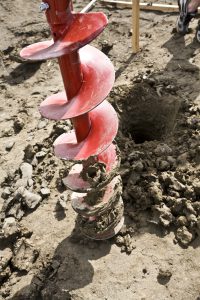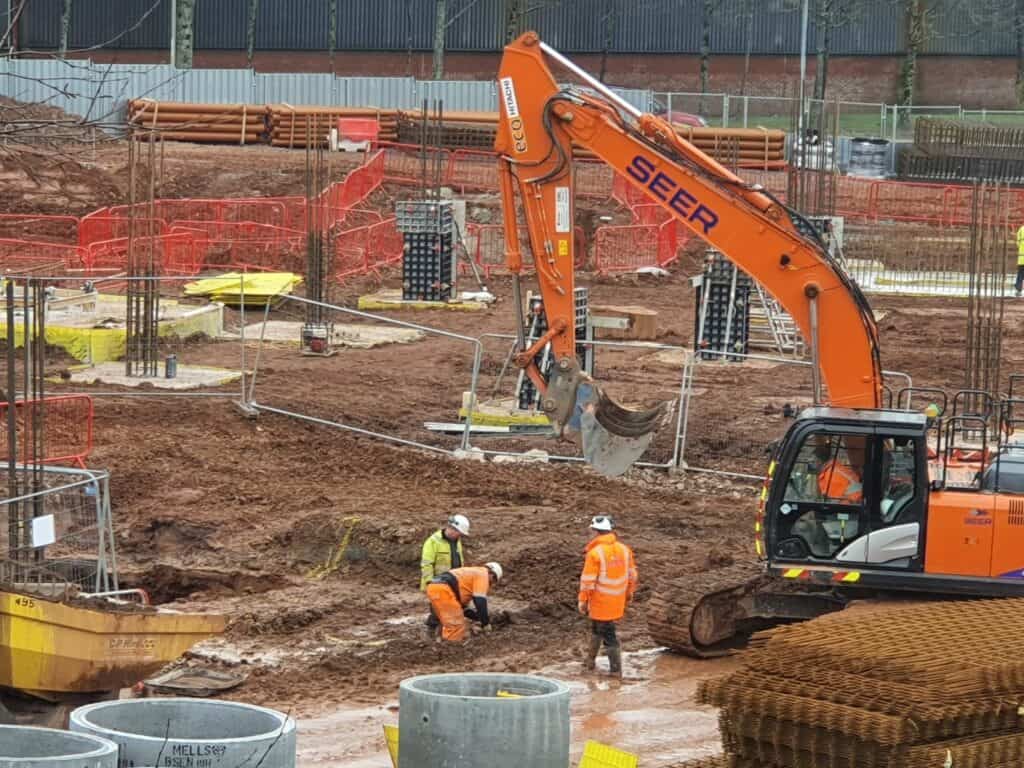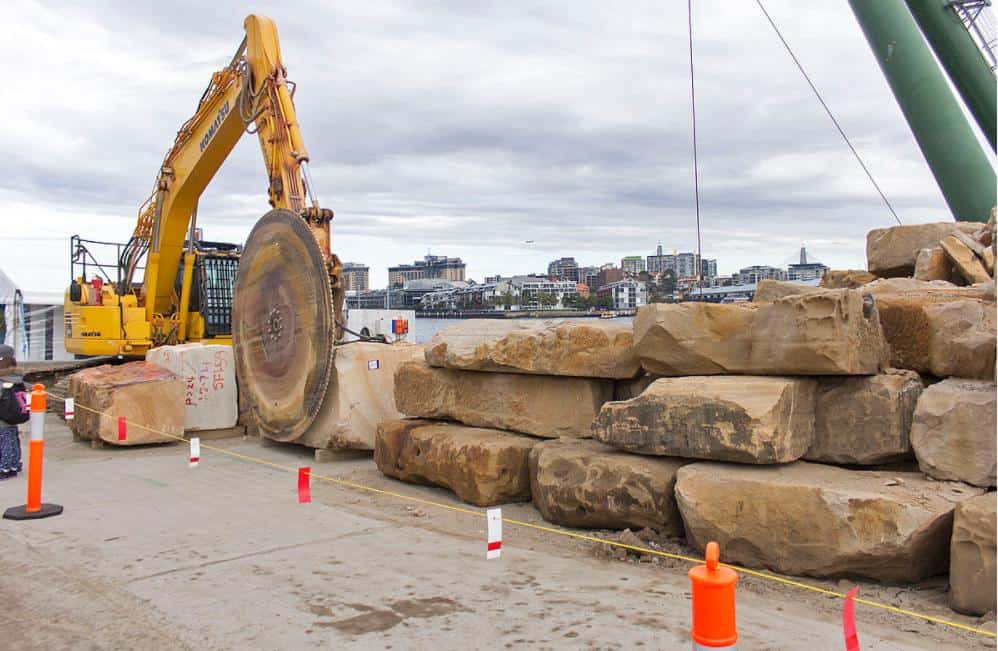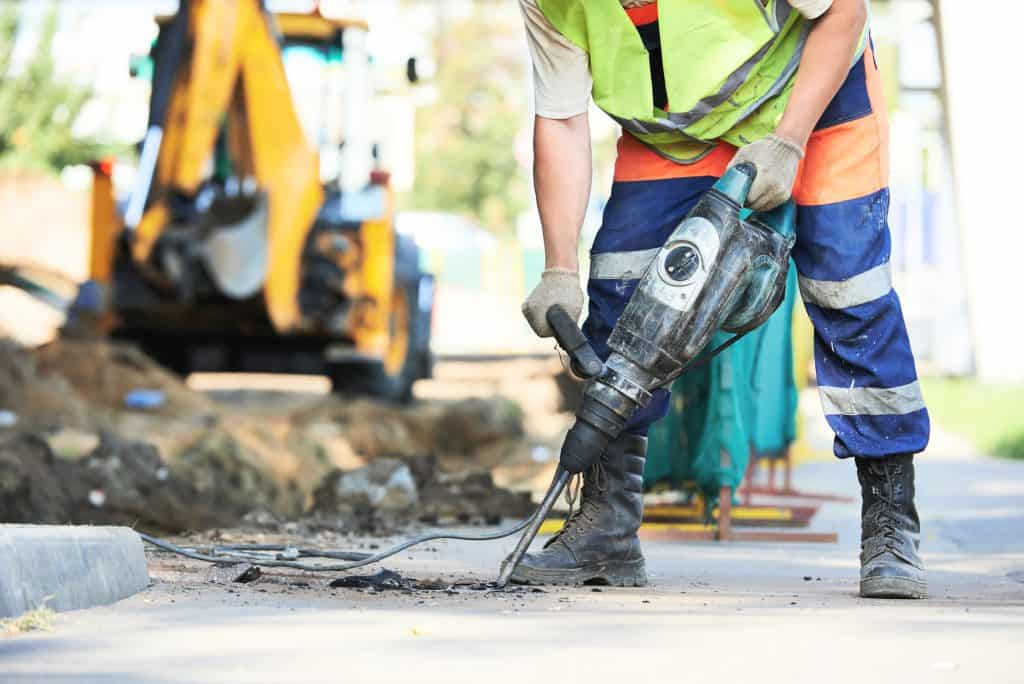Over the course of our blogs, we have mentioned how mini excavators are a versatile piece of machinery and how they can help users accomplish even the most difficult of tasks very easily. Whether you’re looking to level the ground, dig deep holes, or lift heavy objects, mini excavators have you covered.
In this article, we are going to take a look at the different options you have available in terms of attachments to further increase the usability of your mini excavator. So, let’s start digging!
Different Mini Excavator Attachments to Speed Up DIY Jobs
We have discussed grinders extensively in another article, so we won’t get into much detail about those here as thoroughly. If you want to read more about them, we recommend you click here.
Before we get into the nitty-gritties, it is important to remember that there is no ‘best’ or ‘worst’ type of mini excavator for a job. The ‘best mini excavator’ simply depends on the machine’s reliability and features. What matters most is the attachment you use to make your job easier.
To get the most out of our mini excavator, here is a list of the different attachments you can add to your mini excavator.
Digger Attachments
The first attachment type we’re going to discuss is the digger attachment. As the name suggests, digger attachments are used to dig holes in the ground quickly and efficiently. However, depending on the type of hole you need to dig, the attachment you’ll have to use can vary.

Augers
Think of augers as drill bits for your excavator’s boom. These are used to drill holes in the ground quickly, precisely and efficiently. Augers are most commonly used for digging:
- Footings
- Postholes, and
- Tree and shrub plantings

When selecting an auger, you need to consider how deep a hole you want to dig, along with the diameter you’re expecting. An auger will always dig a hole about 2cm wider than the bit’s diameter, so keep that in mind when selecting the best auger. You’ll find augers used in farms more commonly compared to construction sites.
Another consideration to make when selecting the right auger bit are the ground conditions you’re likely to encounter. There are soft bits that farmers use and then there are those that are used to cut through rock. There are four common types of auger bits:
- Light-duty. These augers have soft digging heads and bolt-on teeth. They are designed to dig into different types of soils with minor obstructions. These are the most cost-effective types of augers.
- Heavy-duty. Heavy-duty augers mostly find use in construction sites and places where there are particularly stubborn obstructions in the way. These bits are suitable for hasher ground types and can dig into soft rocks and clay.
- Tree augers. These are two-in-one augers since they have one with a smaller diameter and one head with a larger diameter. The smaller auger is mounted in front of the larger auger. This type of auger is used to plant trees and make room in the ground for roots.
- Rock augers. One of the toughest and perhaps the most expensive types of augers are rock augers. These are used to dig into any type of rock. From mountain rock to solid concrete, these augers can dig precise holes into grounds easily.
Trenchers
If you’re looking to dig long trenches in your land, you simply can’t go wrong with the trencher attachment. At first glance, trencher attachments may look like giant chainsaws but if you look closely, you will find that the blades on the chain aren’t exactly ‘blades’. Instead, they are used to push dirt to the side and dig deep, long trenches.
These ‘saws’ cut into the ground to loosen the soil and prepare it for you to plant seeds or install fences/posts. The best thing about trenchers is that these can cut through almost every soil condition, i.e., whether it is wet, too dry, or even if it has rocks in it. The attachment is very powerful – even more so if you choose to go with hydraulic trenchers.
There is a side-shift feature that you can use to dig wider trenches. There are different teeth and chain options to help you maximize your trenching capabilities. All you have to do to use a trencher is mount it onto your mini excavator and drive in a straight line. Once you are done earthing a trench, just pull the boom up to stop digging.
Buckets
Now that we’ve covered the digging attachments for your mini excavator, let’s look into buckets. You’ll find most excavators with buckets installed in front of them by default. These can also be used for digging thanks to the sharp teeth in front of them. The right bucket can help you dig and remove debris from the dig site in one smooth motion:

Common uses for buckets include cleaning up, digging, grading, lifting (in some cases), and even acting as counterweights where necessary! Though, we advise against using your excavator as a counterweight if you haven’t had respective training first.
There are a large number of mini excavator buckets out there, ranging from small buckets for 2-ton compact excavators all the way to those for 100+ ton excavators. There is also a wide variety of functions that excavator buckets can perform. Let’s discuss these.
Digging Buckets
These buckets are also known as backhoes and are equipped with different-sized digging or grading buckets. Digging buckets, as the name suggests, are used for digging. They have teeth in front of them and a deep bucket used for picking up as much earth as possible and transporting it elsewhere. This is the type of bucket you’re likely to find attached to most excavators.
More recently, manufacturers have started welding or bolting blades on these buckets as well to lower the chances of service strikes.
Grading Buckets
These buckets usually have a straight edge on one end and a blade on the other. These buckets are used for grading (leveling) the ground. The buckets aren’t usually as deep as digging buckets but are much wider. This is to ensure that the excavator doesn’t end up overloading.
Rock Buckets
These are buckets that weren’t usually found attached to mini excavators due to the sheer weight of these. However, there are several renters out there that have smaller rock buckets available. If you can find them, you can use these buckets for aggressive and high abrasion work.
Think of a regular digging bucket, put some armor on it to reduce wear and tear, sharpen the teeth and voila – you have yourself a heavy-duty digging bucket that can break through rocks as well, also known as a rock bucket.
A good example of a rock bucket is the Rhinox range of buckets that can be used on 9 to 25-ton excavators. These heavy-duty buckets come with CAT style bucket teeth and are hardened to 550 HB to ensure a long life.
Trenching Bucket
We mentioned the trencher above; and just like that, there is also a trenching bucket. These buckets are also known as micro trenching buckets or deep dig buckets, even though they are designed to dig small trenches, mostly for utility lines.
These are very narrow, yet deep buckets with two, three, or a maximum of four teeth – just wide enough for a water, electricity, or fiber optic cable to be laid.
V-Bucket
A V-bucket or a trapezoidal bucket is designed to dig trenches in specific shapes. As the name suggests, they are V-shaped and are used to dig trenches of a similar shape. These are used to dig drainage ditches or dykes. Where ordinary buckets or diggers would take several passes to do the same, v-buckets can do it with one smooth motion, thus saving time.
These buckets also find use when power or water lines need to be laid, and there is risk of frost or heavy rain in the area. These buckets don’t really find much use in the DIY field, but it’s good to know about them, regardless.
Riddle Buckets
These are buckets that have either holes or slits in them to help sort aggregate quickly and efficiently, however, they can also be used to sift through fill and soil. These buckets come in different sizes and have several filter sizes as well, letting you sort different types of aggregate and debris.
This bucket is an extremely useful tool when it comes to reducing aggregate mess.
Rake-Riddle Buckets
Think of a rake and make it big – bigger than a riddle bucket and then attach it at the end of your mini (or even large) excavator, and you have yourself a rake-riddle bucket. You can use these buckets as rakes or as riddle buckets as and when need be. As the name suggests, it is a combination of both.
However, the bucket isn’t exactly a ‘bucket’, i.e., it isn’t as deep. If you think you need a riddle bucket more than a rake, you would be better off renting out a riddle bucket instead of a rake-riddle. The purpose of this bucket is to help operators rake the ground and riddle what you extract from it.
Tilt-Ditching Bucket
These are much like regular buckets, except for the fact that they are fitted with a hydraulic tilting mechanism which you control form within the cabin. The tilt is supposed to let the bucket swivel 45° left or right to help the driver landscape more effectively.
With a tilt-ditching bucket, you can cut the earth at unique angles and therefore beautify your lawn further. You’ll find these buckets used extensively in high-end gardens or more often on golf courses.
Blade Attachments

These mini excavator attachments are most often used to smooth over larger, more stubborn surfaces that grading buckets won’t work on. The most common use for these attachments is for roadwork. Depending on the size of the blade you choose, these attachments can cost anywhere between $750 and $2,500.
You can choose between six default sizes, but construction companies often end up getting custom blades manufactured as well. Where two of the smallest sizes are fit for compact or mini excavators, the other four are for excavators heavier than 9-tons.
Some manufacturers also include welded teeth on these blades and offer teeth covers to smooth the edge bucket as and when necessary. The cover has a simple slide and lock mechanism, while the attachment itself can be installed in less than 60 seconds.
Some higher end blade attachments have wings that can be extended or contracted up to 30° to control the dirt, debris, or road underneath. These wings also ensure that there are no windows left after the blade has run its course.
These blades can level any terrain as long as you aren’t trying to level boulders or stumps with it – or are paying attention.
Blade attachments with your mini excavator can be used not just to level dirt but also to:
- Backfill trenches
- Give your grading a smooth finish
- Shape drainage dig sites
- Grade landscapes, and more
Winch/Grab Attachment
As the name suggests, these attachments are used to grab on to material (for suspension in the air) or to hook on to other machinery and pull it out of ditches (or again, to suspend it in the air). With the help of a winch attachment, you can turn your excavator into a mini crane if you’d like, but only for pulling purposes.
The best use for a winch or attachment is demolition, recycling, waste transfer, and as mentioned above, to pull machinery and material. Usually, compact excavators, i.e., those under 20 tons have a 95-120 horsepower engine, while those above 40 have 367-532 horsepower engines – or even more.
There are also some hydraulically rotating winches that don’t necessarily rely on the engine’s horsepower.
The grab attachment, on the other hand, is nothing short of a claw. If the claw has just two or three fingers, it is used to cut trees. However, this isn’t the recommended use for these claws. Don’t confuse these for shears, mind you.
Most grab attachments have four our more ‘thumbs’ which are used to securely hold on to whatever you’re trying to pick up. 5-finger hydraulic grab attachments are considered the most versatile tools for grappling applications. These attachments can often spin 360° on its axis to help the user get better grip on their subject.
JIANGTU hydraulic grab is a prime example of a 5-fingered, versatile grab attachment that has found extensive use on construction sites for transporting material, demolition, farming, or more.
Jackhammer Attachment

Jackhammers are considered to be one of the best mini excavator attachments to speed up DIY jobs; especially those where you need to break stuff. Just make sure you are using the right jackhammer attachment for your job.
There are two main types of jackhammer attachments; hydraulic and non-hydraulic. Of course, hydraulic jackhammers are more efficient than their counterparts, but also cost more. These attachments can be divided into three generic types:
- Small hydraulic breakers. These offer up to 1200-ft lbs. (1627 Joules) of raw energy and are mostly used for light demolition, such as concrete.
- Medium hydraulic breakers. These jackhammers offer up to 4000-ft lbs. (5423 Joules) of raw energy and can break into rocks as well as concrete. These jackhammers can also make short work of rebars within buildings if they come in contact with them. They need less frequent breaks than small jackhammers, but they still need breaks to cool down.
- Large hydraulic breakers. With these jackhammer attachments, you can expect up to 15000 ft lbs. (more than 20,000 Joules) of raw power. These are used in large-scale construction projects and require little to no breaks between operation.
Pile Driver Attachment
Pile drivers are large machines used to drive poles deep into the ground. These machines use tremendously heavy weights to build up enough kinetic energy to be able to reach deeper and deeper and therefore give the poles more grip. Standing next to pile drivers, you can actually feel the ground vibrating as the weights hit.
You can turn your mini excavator into a pile driver as well if you’re making your own home or even just a patio. Although the pile driver you can attach with a mini excavator isn’t as powerful, it is a good fit for speeding up DIY projects.
Having said that, the small size doesn’t mean that mini excavator pile driver attachments aren’t used in commercial construction or design builds. Hydraulic pile drivers use vibratory hammers to reduce the cohesion in the soil underneath, effectively allowing the same pole to go deeper into the ground.
These were some of the few, more commonly used mini excavator attachments that you may need in order to speed up your DIY jobs. There are also sheers, grinders, stone saw attachments (as shown in the featured image on top) and more. The possibilities are endless with an excavator, and as long as people need more functionality, min or compact excavators will continue to evolve; and so will the associated attachments.
